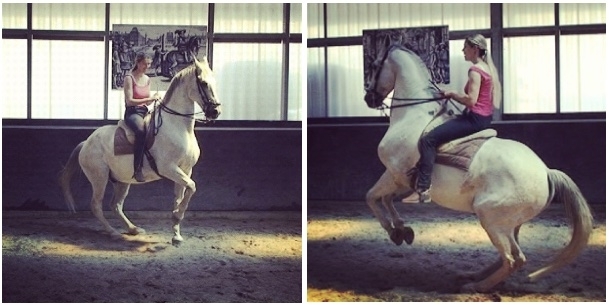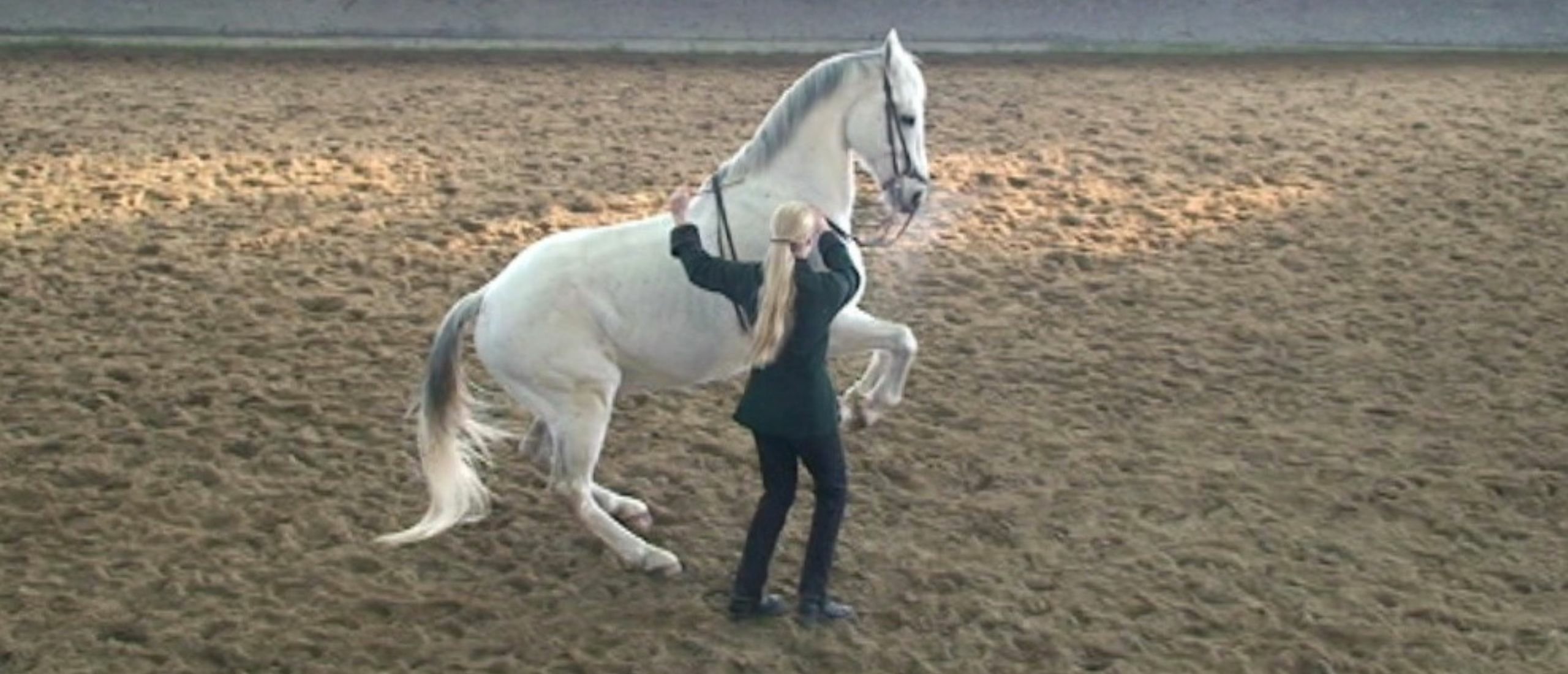
Levade
In the levade the horse carries 100% of its weight on the hindquarter.
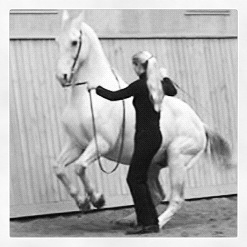
Definition
In the levade the horse bends its hind legs equally in the same moment to carry 100% of the weight. The back makes an angle of about 35 degrees and the wither remains at the same height as when standing with a maximum of a hand width higher or lower.
The horse folds its front legs under its body and remains in this position for 2 or 3 seconds. The hind legs are not supposed to be placed wide and/or uneven (one hind leg further forward than the other).
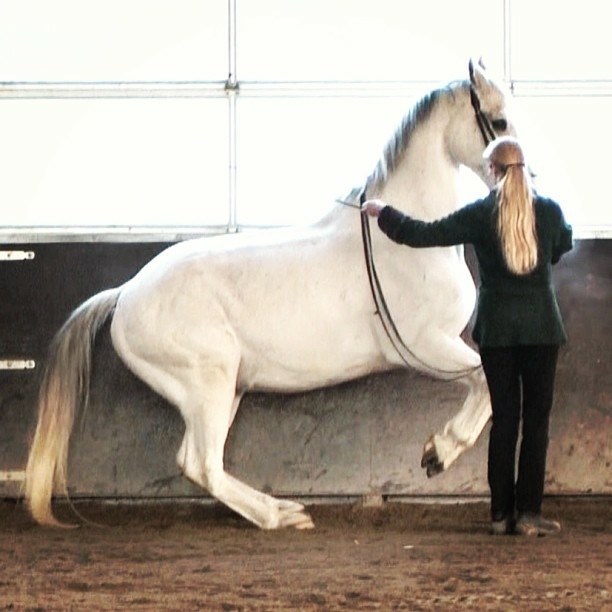
Because of the greater bending, the levade is more difficult than the pesade.
The pesade is an exercise in which the horse has an angle of 45 degrees or more.
In pesade, the horse raises itself, while in the levade the horse bends through its haunches and “sits down”.
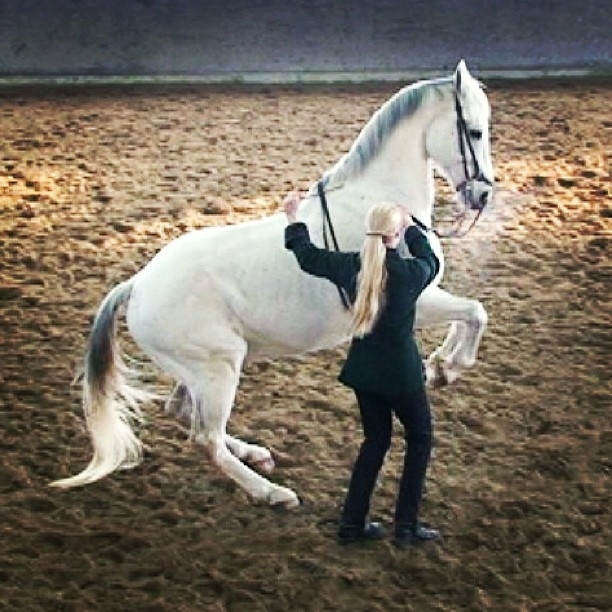
Goal
The levade shows whether the piaffe was taught to the horse correctly.
The levade contributes to making the hindquarter more powerful and bendable.
Also, levade is the perfect check whether the horse is trained straight.

Teaching the levade to your horse
First, the levade in hand is taught to the horse.
The rider asks a piaffe in place. Then the horse is asked to put more and more weight on the hind legs, so that first one front leg is lifted and then, when the horse feels balanced and comfortable, the other front leg is also lifted.
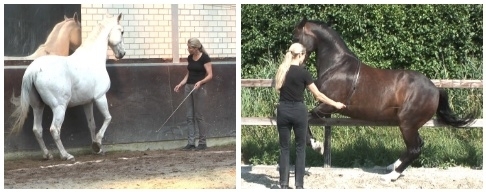
When the horse responds by accident the first time and lifts himself a little bit, the exercise should be stopped for that day and the horse should be rewarded thoroughly.
In the beginning, the horse only needs to stay in this positing for a short time. The stronger the horse becomes, the more it will bend its hind legs and the more it will “sit down” and fold its front legs under its body.
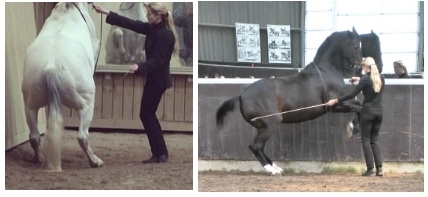
Later on, you can perform the levade also when riding.
